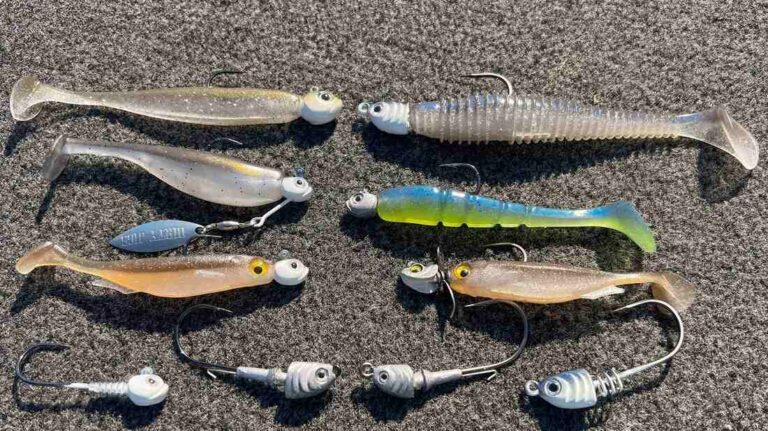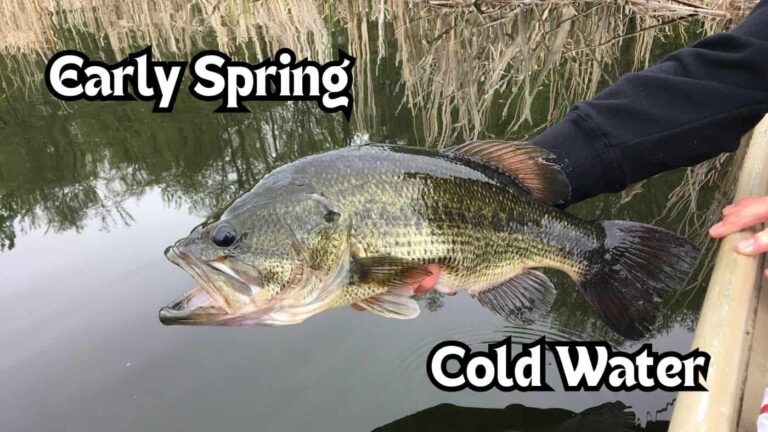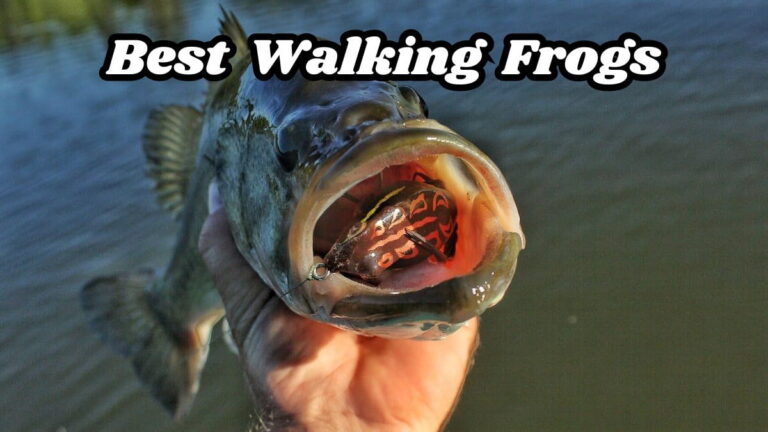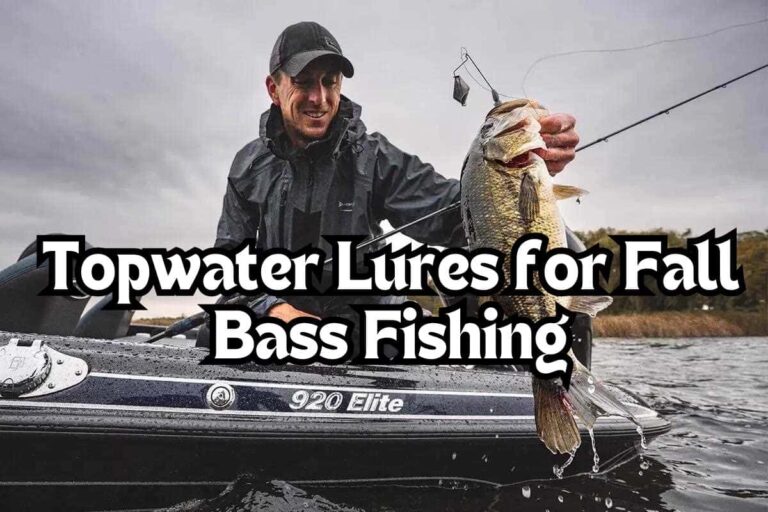When to Use a Spinnerbait for Bass Fishing?
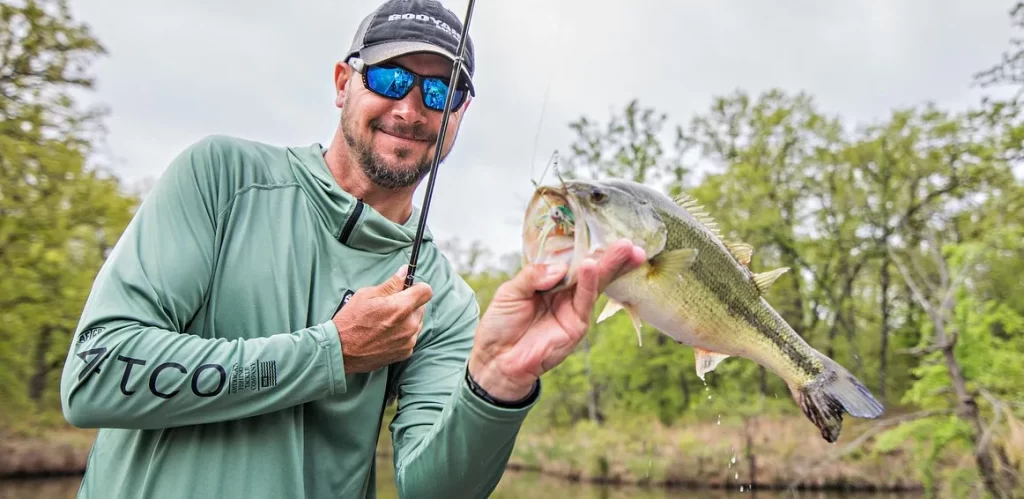
Spinnerbaits have been around for decades and are one of the best bass lures on the market.
There are many anglers such as Jimmy Houston, who leaned on the spinnerbait to build their brand in the fishing industry.
But no lure is always the best option. You need to know when to use a spinnerbait in order to maximize your success with it.
Best Time of Year to Use a Spinnerbait
The spinnerbait is effective for the majority of the year. The only times I won’t use a spinnerbait is during the dead of winter.
When the water is very cold and bass aren’t super active, spinnerbaits are too aggressive and fast to get many bites.
But from the time the pre-spawn begins all the way until the late fall, I am fishing spinnerbaits.
With that being said, there are two times of year where spinnerbaits really shine.
Fall / Autumn
Everyone knows that the fall is a fantastic bass fishing season. And in my opinion, no lure catches more fall bass than a spinnerbait.
During the fall months, bass are really focusing on schooling baitfish.
This may be shad, shiner, bluegill, or other small fish that school up in order to prepare for winter.
Think of a spinnerbait as a miniature, compact Alabama rig. The blades up above the body of the lure makes it look like a small school of fish swimming together.
Bass just eat this up. The spinnerbait gives you the ability to mimic multiple baitfish while maintaining a smaller, lighter, more compact lure profile that is very easy to fish.
In the fall, I tend to fish my spinnerbaits up near the surface, because this is where bass do must of their feeding during the cooling months.
Pre-Spawn
In the past few years, the chatterbait has become one of the most popular pre-spawn lures.
But us anglers have been catching pre-spawn bass on spinnerbaits for decades.
So don’t get caught in the latest, trends. Spinnerbaits are almost impossible to beat during this time of year.
The water is still quite cold and bass aren’t as aggressive as in the fall. So you need to change up your spinnerbait tactics.
Use Colorado blade spinnerbaits so that you can fish slower, lower, and put off more vibration.
Spinnerbaits are fairly snagless, so you can fish them around docks, wood, and rocks.
The Shad Spawn
Without a doubt, spinnerbaits are the best, and most popular lures for bass fishing the shad spawn.
A fast moving spinnerbait looks exactly like a few scared shad swimming around together away from the main schools.
You can cover a lot of water and you get the flash and vibration that draw the bass in from a distance.
Bass will absolutely crush these things when they are up shallow feeding on these spawning baitfish.
The shad spawn is undoubtedly one of the best times to use a spinnerbait.
Use Spinnerbaits on Overcast Days

Light conditions are a very important consideration. Spinnerbaits will work much, much better on cloudy, overcast, or even rainy days.
Part if the reason for this is that when the sun is bright and visibility is very high, bass can see the wire arm and unnatural components of the lure.
On overcast days, the water is much darker and bass can’t get as good of a look at the spinnerbait.
The bass just feel the vibration, see the flash, and attack the attractive skirt.
Morning and Evening Hours

This rule follows the same logic as overcast days. The morning and evening hours of the day are much lower light scenarios.
Meaning that water visibility will be lowered and the spinnerbait will look more natural and enticing to bass.
Fish a Spinnerbait in Wind

Generally speaking, this rule also follows the same logic. The wind creates lots of chop on the water which scatters and breaks up the sunlight entering the water.
This scattered light distorts the visibility and makes it a bit harder for bass to see your lure clearly.
Aside from the visibility factor, the wind also stirs up the water and gets baitfish disoriented, out in the open, and quickly darting around.
The spinnerbait is a perfect way to imitate a few baitfish that are trying to find safer waters.
Best Water Depth for Spinnerbait Fishing
I rarely fish a spinnerbait in deeper than 10 feet of water.
There are some guys that use big, heavy spinnerbaits to fish 15-20 feet, but I feel like the spinnerbait loses much of it’s effectiveness past about 10 feet.
Most of my focus is on the 4-6 foot depth range, but I will fish a spinnerbait in as shallow as 1-2 feet if the bass are that shallow.
As a general rule of thumb, the shallower the water, the faster you should retrieve the spinnerbait.
So in real shallow water, use a double willow leaf spinnerbait. And in deeper water, use Colorado blade spinnerbait.
When to Use a Willow Leaf Spinnerbait?
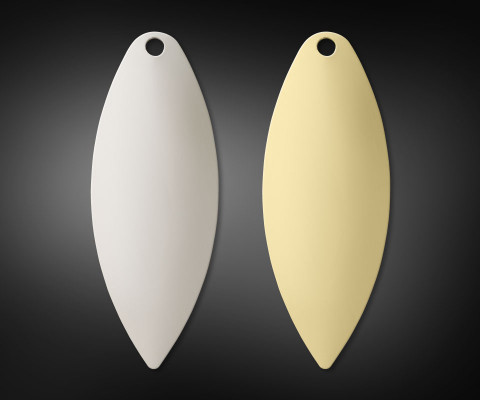
It is important to understand the characteristics of willow leaf blades.
- Put off the most flash
- Put off the least vibration
- Give the lure the least resistance and rise
With these in mind, willow leaf blades are better for fishing shallow water, fishing clear water, and fishing at faster speeds.
The faster speeds part is particularly important because you will be fishing these blades in warmer water where bass are more willing to move fast.
From the summer months through the fall, willow leaf blades typically work better.
When to Use a Colorado Blade Spinnerbait?
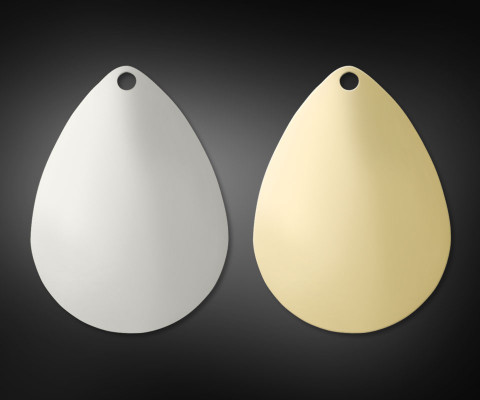
Colorado blades have the exact opposite characteristics of the willow leaf.
- Put off the least flash
- Put off the most vibration
- Give the lure tons of resistance and rise
The Colorado blades are better designed for deeper water, muddy water, and slower speeds.
If you try to reel a Colorado blade spinnerbait with a fast retrieve, it will quickly rise to the surface, turn on it’s side, and stop running correctly.
Colorado blades are ideal for pre-spawn and late fall fishing.
Tandem Blade Spinnerbaits
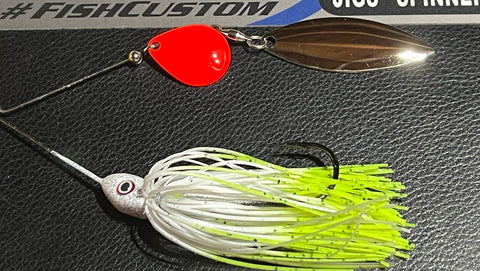
Tandem blade spinnerbaits have two different kinds of blades.
Typically this is a small Colorado blade in front and a willow leaf blade behind.
This gives the bait the best of both worlds, and makes it incredible versatile.
When to Use a Trailer on Your Spinnerbait?
I am not as into using trailer baits on my spinnerbaits. For the most part, I don’t use one at all.
When I do choose to use a trailer bait, I will either use a small fluke bait or curl tail grub.
These soft plastics don’t give off lots of action or vibration. Their purpose is simply to bulk up the lure a bit and present a more enticing meal.
I have found that trailers such as paddle tail swimbaits or flapping crawfish do more harm than good.
They will sometimes make the spinnerbait run crooked or give the lure too much rise.
Trailers are more of a personal preference and are certainly not a requirement for spinnerbait fishing.
Gear for Spinnerbait Fishing
Key Points
- Effective Seasons: Spinnerbaits are effective for most of the year, excluding the dead of winter when bass are less active due to cold water temperatures.
- Fall/Autumn Excellence: Spinnerbaits excel during the fall season, imitating schooling baitfish and attracting bass looking to feed before winter.
- Pre-Spawn Success: Spinnerbaits remain effective in the pre-spawn period, offering a slower, lower, and more vibrational approach compared to other lures like chatterbaits.
- Optimal Conditions: Spinnerbaits work best on overcast days, during morning and evening hours, and in windy conditions, providing reduced visibility for bass and imitating disoriented baitfish.
- Shallow Water Preference: Generally effective in water depths of 1-10 feet, with a focus on the 4-6 foot range. Retrieve speed varies with water depth, utilizing double willow leaf for shallow and Colorado blade for deeper waters.
- Blade Selection: Willow leaf blades provide more flash, less vibration, and less resistance, making them suitable for clear and shallow waters. Colorado blades offer less flash, more vibration, and more resistance, making them ideal for deeper and muddy waters.
- Tandem Blade Versatility: Tandem blade spinnerbaits with both Colorado and willow leaf blades provide versatility, combining the advantages of both blade types.
- Trailer Usage: While not essential, trailers like small flukes or curl tail grubs can be used to bulk up the lure and present a more enticing meal. Avoid using trailers that may disrupt the spinnerbait’s balance or rise.
FAQ
Q1: When is the best time to use a spinnerbait?
- A: Spinnerbaits are effective from pre-spawn through late fall, excluding the dead of winter when bass are less active.
Q2: What are the optimal conditions for spinnerbait fishing?
- A: Overcast days, morning and evening hours, and windy conditions enhance the effectiveness of spinnerbaits by reducing visibility and imitating disoriented baitfish.
Q3: What water depths are suitable for spinnerbait fishing?
- A: Spinnerbaits are effective in shallow to moderate depths (1-10 feet), with different blade types and retrieval speeds recommended for different depths.
Q4: When Do I Use Colored Spinnerbait Blades?
- Colored blades work best in the two water clarity extremes. These being very muddy water or very clear water. Colored blades are less effective in stained water.
Reeling this In
Spinnerbaits, a timeless favorite among anglers, prove their effectiveness throughout much of the fishing season.
From the bustling days of fall to the pre-spawn chill, understanding when and how to deploy these lures enhances success.
In essence, mastering spinnerbait fishing involves aligning tactics with seasonal and environmental cues.
With adaptability and strategic thinking, anglers can consistently maximize the potential of spinnerbaits and reel in impressive bass year-round.


